Estamos completando 18 meses sem carne.
A ideia nunca foi ser uma escolha restritiva, mas ao contrário ser um processo de descoberta de novos sabores e mil e uma combinações. Desde que tiramos a carne da nossa alimentação, abriu-se um extenso leque de possibilidades na cozinha que não tinhamos ideia que existia.
Tivemos alguns deslizes nesse período. Aconteceu quando ficamos na casa de amigos que prepararam jantar com todo amor para nos receber e jamais recusariamos, mas quem sabe não conseguiremos inspirar mais pessoas cozinhar vegetais e ter carne como acompanhamento, e não o inverso.
We are just completing 18 months without meat. The idea was never to restrict our diet, in fact, the opposite. There exist around us 1000’s of fruits, grains, pulses, vegetables and funghi. Combined, these create unlimited combinations. Since we removed meat from our daily diet, we’ve began to discover food from all around the World, that we can prepare in our kitchen, that we never knew existed. We had some slip ups along the way, staying with friends whom prepare food in their kitchens, for us to share and enjoy together, and we’d never dream of refusing, but moving forward, hopefully we can inspire those close to us to begin to prepare vegetarian food, with a meat side, rather than the other way around.

Para família sempre deixamos claro, e minha mãe achou a solução. Ela começou esconder carne na nossa comida. Sério. Ela fatiava de forma quase microscópica (ás vezes acho que ela passava no processador) e misturava nos legumes com muito molho pra não vermos. Ela ainda tem muita dificuldade em aceitar nossa decisão. Tem sempre aquela conversa que vai faltar proteína e vitaminas, etc.
Ledo engano, pois nunca nos sentimos tão saudáveis. Nem resfriado pegamos. Acho que ela parou de esconder carne. Parou mãe???
With the family, we always told them straight, that we no longer ate meat, and at events. we’d bring a principal dish and sides for us, and for others to sample. But Tati’s Mum wouldn’t have it, she’d try and hide meat in dishes, ground up to a microscopic speck, and drowned in sauce and spice. Like we couldn’t tell. She still has some difficulty in accepting the fact that we’re on this chosen path, and she always needs to talk about how we are missing out on proteins, vitamins and nutrition. But our Mothers aren’t always right.. We’ve never felt healthier, nor caught a cold in this period. Thankfully now, she has stopped hiding meat!

Em casa é mais fácil escolher o que vai no prato.Essa é a segunda etapa de alimentação sem carne na minha vida.
Na primeira vez foram 3 meses. Foi logo que voltei de uma viagem à India e como tinha mantido alimentação vegetariana por lá resolvi extender por mais um período.
Não foi nada fácil. Naquele tempo eu mal fazia miojo em casa e durante a semana fazia todas as refeições no escritório. Apesar de ter um buffet bem servido de saladas não tinha nenhuma opção que enchesse os olhos. Nesse período a minha dieta foi bem pobre e acabei mesmo ficando um pouco fraca.
Ok. Isso explica a preocupação da minha mãe. Porém as coisas estão diferente agora. Nossa lista de receitas maravilhosas com vegetais cresceu quase na mesma proporção que a indústria da carne (brincadeirinha).
This is my second attempt at going Veggie. The first time was just for 3 months. I recently returned home from a trip to India, since I had eaten a vegetarian diet there, I decided to keep it going a while longer. But it wasn’t easy. At that time, I had never learned to cook for myself at home, and would just eat lunch at the office, they had a large salad buffet, but with very limited Veggie options, so I wasn’t eating right at all. I got weak.. Perhaps this explains my Mum’s concerns now?! But things are different now. Our list of plates is growing by the day, almost at the same rate of the deforestation of the Amazon, so the World can enjoy a steak…. Joking, sort of.

Não nos declaramos vegetarianos, nem veganos, nem nada. Não precisamos de uma etiqueta. Dan e eu estamos mesmo é buscando uma alimentação mais natural, limpa e justa com o planeta (Quase o slogan do #slowfood). Esse é nosso jeito de cuidar melhor do nosso corpo e do planeta. Sabemos onde comprar boas hortaliças orgânicos que são produzidos por pessoas que confiamos, mas desconhecemos completamente onde comprar carne que não tenha sido entuchada de antibiótico ou que o animal tenha sido tratado com o mínimo de respeito.
Acho que já mencionei aqui que minha mãe nasceu e foi criada no interior de Minas Gerais. Meus avós tinham uma fazenda e tenho maravilhosas memórias de brincadeiras e travessuras pela casa. Eles sempre tiveram criação de galinhas, porcos, patos e vacas. E sim no “final do dia” se alimentavam das criações e também comercializavam. Trazia o sustento da casa.
Quando chegava o momento deles servirem de alimento para família todos sabiam de onde vinha e como tinham sido criados. Todo o animal era aproveitado, não somente o filé ou o peito do frango e ter carne no prato não era regra.
Sabemos onde encontrar boas hortaliças aqui na região, ás vezes vem até da nossa hortinha, mas carne desconhecemos completamente e por isso seguimos desbravando os vegetais.
We are not declaring that we are vegetarians, nor vegans, or anything, in fact. There doesn’t need to be an etiquette for things like this. Dan and I are just searching for a more natural food, a cleaner and just diet, for us and for the planet. (Almost the slogan for the #slowfood movement). This is our attempt to look after ourselves and our environment better. We know where to buy fresh, organic produce, produced by people whom we trust, and we grow our own food here, at Oficina, too. But we have zero idea of where to buy meat that has been reared with at least the minimum or respect, that lead a decent, free life, or that is not pumped full of growth hormones and antibiotics.
I think I’ve already mentioned my Mum is from the interior of Minas Gerias. My grandparents had a farm there, and they bred cattle, chickens, pigs and grew a huge percentage of the food they consumed. I have fond memories of playing around the farm, and yes, at the end of the day, sitting around the table and eating something they’d slaughtered. But the difference was we knew where it came from, who cared for it, what it ate, who slaughtered it and who prepared it, and the whole animal was used, not just a fillet, or a chicken breast.
We know where to get our Veggies from, but until we find a reliable source for meat, we’ll continue this path.

Informação, conhecimento e consciência. Isso vale não só para decidir se vai comer carne ou não, mas com tudo o que consumimos de uma maneira geral.
Information, knowledge and awareness. This is valid way to not only to decide whether to eat meat or not, but with everything we consume in a general way.

Ter uma alimentação a base de plantas foi difícil no início. Não porque tivemos vontade de comer carne, mas porque era sempre um martírio decidir o que fazer para o jantar. Na maioria das casas brasileiras a carne é o astro do prato e o restante só acompanha.
Foram uns bons meses até conseguirmos reverter esse jogo.
Criamos um esquema de planejar semanalmente quais pratos vamos fazer. Isso ajuda muito a economizar nas compras, reduzir o desperdício e o tempo que perdíamos discutindo o que fazer para o jantar.
Vamos começar compartilhar por aqui nossas receitas favoritas. Começando com um prato que amamos e que aprendemos através do livro Jerusalém, do OttoLenghi. <3
Normalmente servido em brunch, mas não nos limitamos e comemos do cafe da manhã ao jantar. Quando dá vontade.
Having a plant based diet was difficult at first. Not because we wanted to eat meat, but because it was always a martyrdom to decide what to do for dinner. In most Brazilian houses meat is the star of the dish and the rest is simply a compliment. It was a good few months until we got our heads around rearranging the plate around plants, rather than a hunk of meat.
We have created a scheme to plan weekly what dishes we will make. This helps a lot to save money on shopping, reduce waste and waste time discussing what to do for dinner.
Let’s start sharing our favorite recipes here. Starting with a dish we love and learned through OttoLenghi’s Jerusalem book.

O que tem pra comer hoje?
What’s for dinner today?
Shakshuka

(Adaptado de muitas receitas. Divirtam-se e adaptem também)
(Adapted from several recipes, you can enjoy adapting for yourself too, of course).
2 colheres de sopa de azeite ou óleo de coco
1 cebola picadinhas
2 dentes de alho picadinhos
1 pimentão vermelho ou amarelo cortado em tiras
1 porção de tomatinhos cereja (opcional)
1 colher de chá de páprica em pó (usamos a picante)
1 colher de chá de coentro em pó (se vc gostar)
1 colher de chá de cominho em pó
1 mão cheia de ervas como salsinha, cebolinha, menta, coentro e manjericão, picadinhas (as suas favoritas. Ouse)
400 g de tomates pelados em cubos ou um molho de tomate maravilhoso que vc tenha feito em casa
1 colher de sopa de mel
1 colher de sopa de chilli em pasta (opcional)
água
4 ovos (caipiras se possível)
sal e pimenta do reino à gosto
Para servir:
pão <3
zaatar
Molho de iogurte + ervas
2 tablespoons of olive oil/coconut oil
1 onion diced
2 garlic segments, finely chopped
1 pepper cubed.
A good handful of cherry tomatoes halved (optional)
1 teaspoon paprika
1 teaspoon of coriander spice
1 teaspoon of cumin
A handful of fresh herbs, basil, thyme, rosemary, bay leaves, scallions
400g of peeled tomatoes, cubed, or make your own homemade tomato sauce
1 tablespoon of honey
1 tablespoon chilli
Water
4 fresh eggs
Salt and pepper to taste
To serve
Fresh bread
Zaatar
Yoghurt and herbs

Preparo:
1. Coloque azeite ou óleo de coco na panela e frite a cebola em fogo médio por mais ou menos 5 minutos.
1a. Add oil to a hot pan and add onion for 5 or so minutes until clear and browning slightly.
 2.
2.
2. Adicione pimentão, cominho, coentro e os tomatinhos (se usando) por mais 10 minutos em fogo baixo, continue mexendo.
2a. Add pepper, cumin, coriander and cherry tomatoes (if using) for an extra 10 minutes, on a low heat, continually stirring.

3. Adicione os tomates pelados ou seu molho de tomate, alho, sal, mel, páprica, ervas e chilli (se usando) e deixa cozinhar por 10 minutos em fogo baixo.
3a. Add tomatoes, or your sauce, garlic, honey, paprika, herbs, chili and salt and pepper and leave to simmer for 10 minutes on a low heat.

4. Mexa ocasionalmente e adicione um pouco de água se começar grudar no fundo.
4a. Stir occasionally so it doesn’t stick to the pan, add in some water if it begins to thicken too much.

5. Com uma espátula ou colher de pau abra 4 cavidades no molho, quebre os ovos (um de cada vez) em uma tigelinha e adicione os ovos em cada cavidade com cuidado. Tampe a panela e deixe cozinhar de 8-10 minutos. Dependendo da consistência que vc gosta do ovo.
5a. With a wooden spoon open up 4 holes in the sauce, open up an egg and pop it into the hole, one for each hole, use a small bowl to help drop it in carefully. Close up the lid and allow the egg to poach. Anywhere between 8 to 10 minutes, depending on how you like your egg.

6. Retire do fogo e delicie-se com muiiiito pão, ervas frescas, zaatar, molho de iogurte e o que mais vc quiser.
6a. Remove the pan from the heat and serve on a warmed plate, with a healthy portion of fresh bread, zaatar, yoghurt or whatever else takes your fancy!

Shashuka


















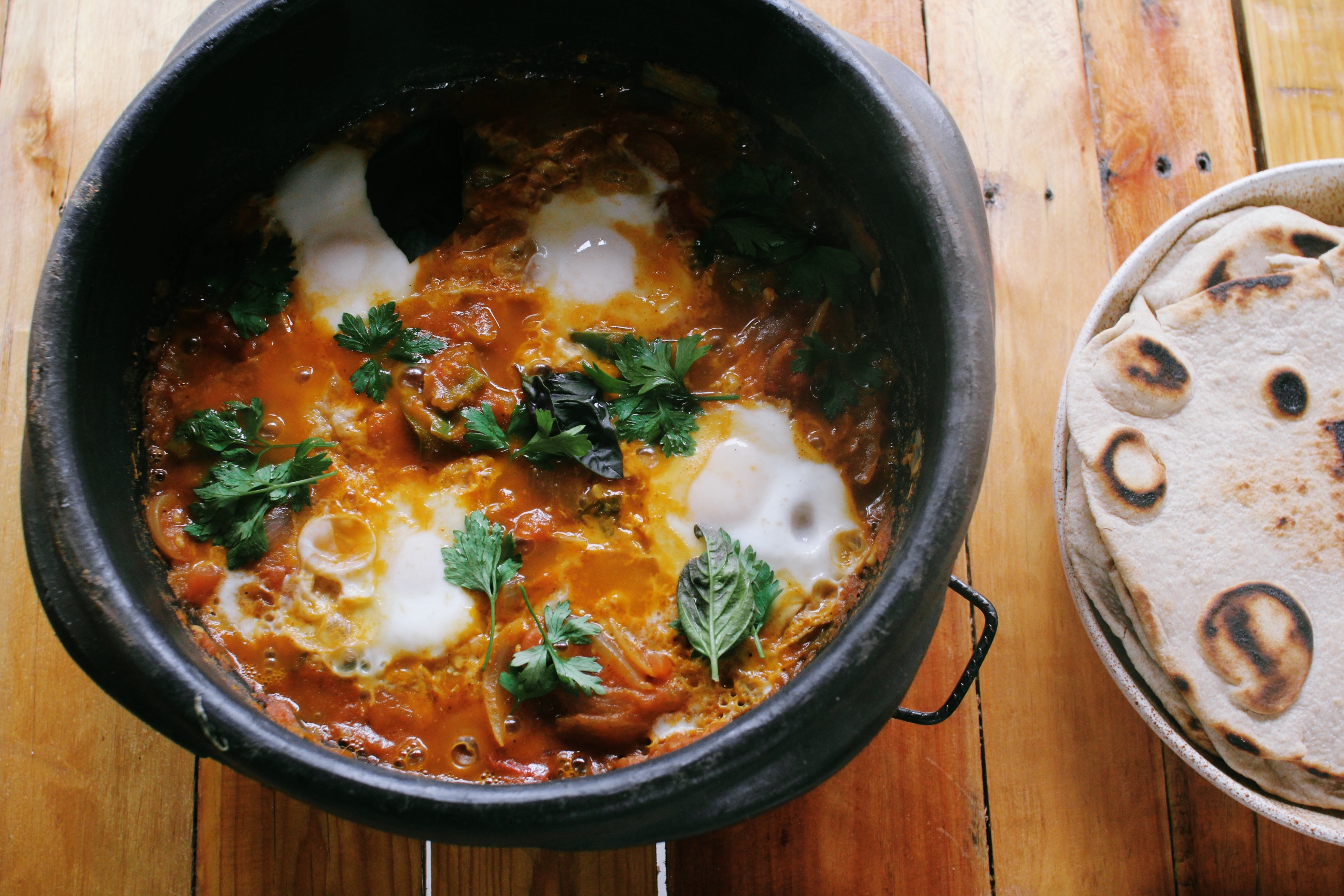








 2.
2.




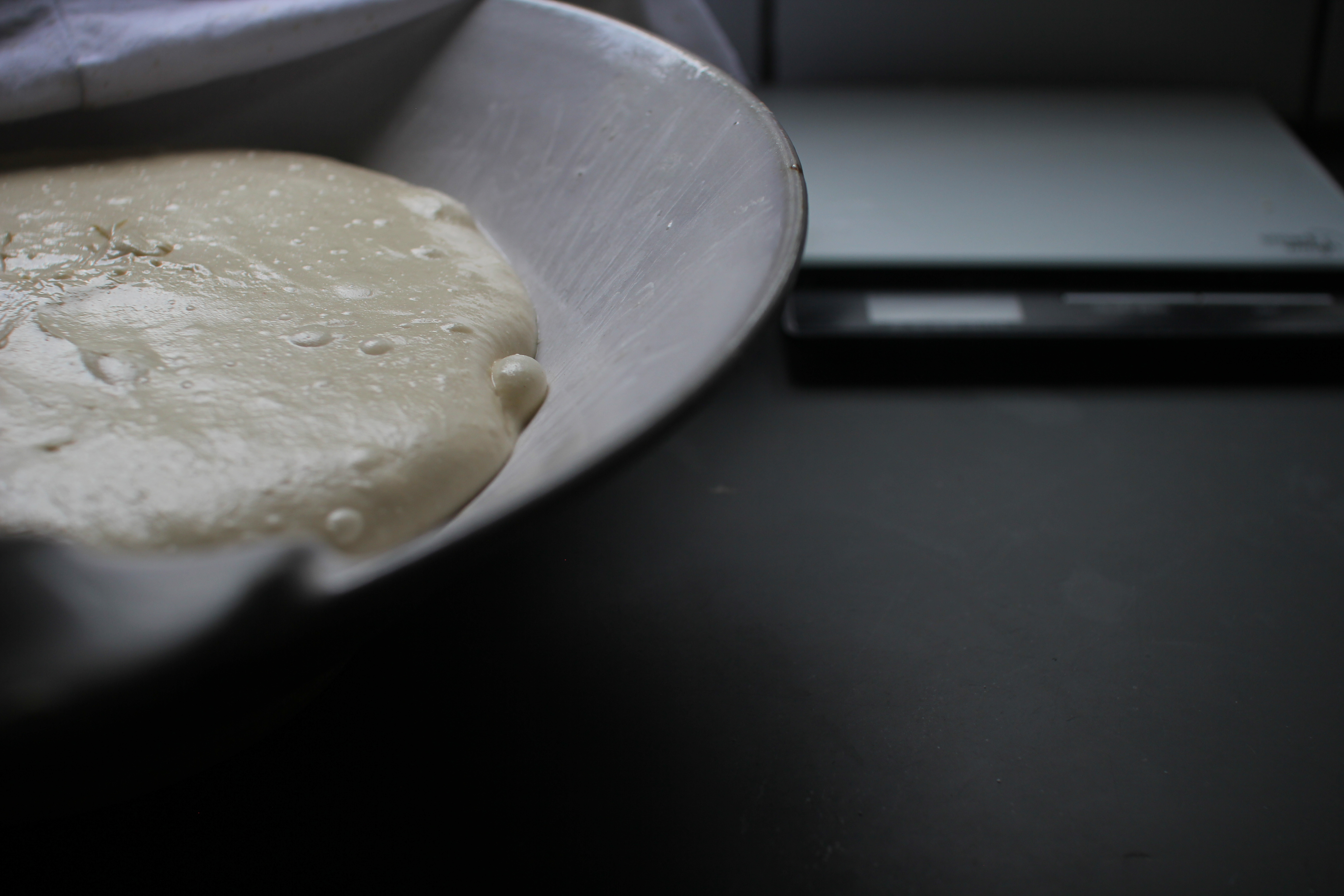






 Morar em uma casa pequena em uma cidade pequena. Levar uma vida simples. Tudo isso tem sido de grande aprendizado, mas nesse momento nada tem nos ensinado tanto sobre a vida e sobre o tempo das coisas como quando fazemos pão.
Morar em uma casa pequena em uma cidade pequena. Levar uma vida simples. Tudo isso tem sido de grande aprendizado, mas nesse momento nada tem nos ensinado tanto sobre a vida e sobre o tempo das coisas como quando fazemos pão. 




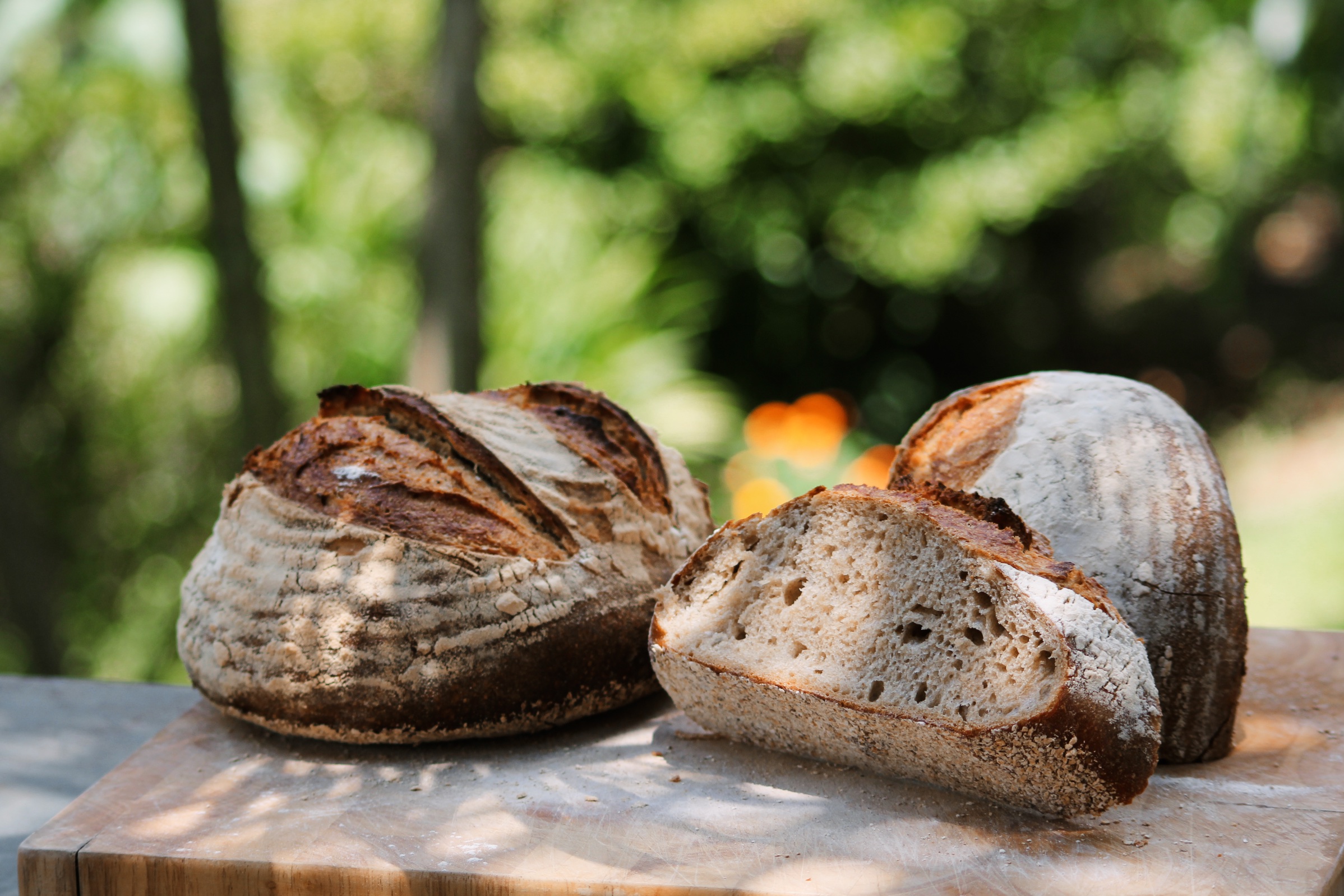



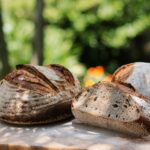
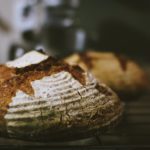
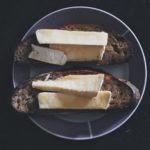
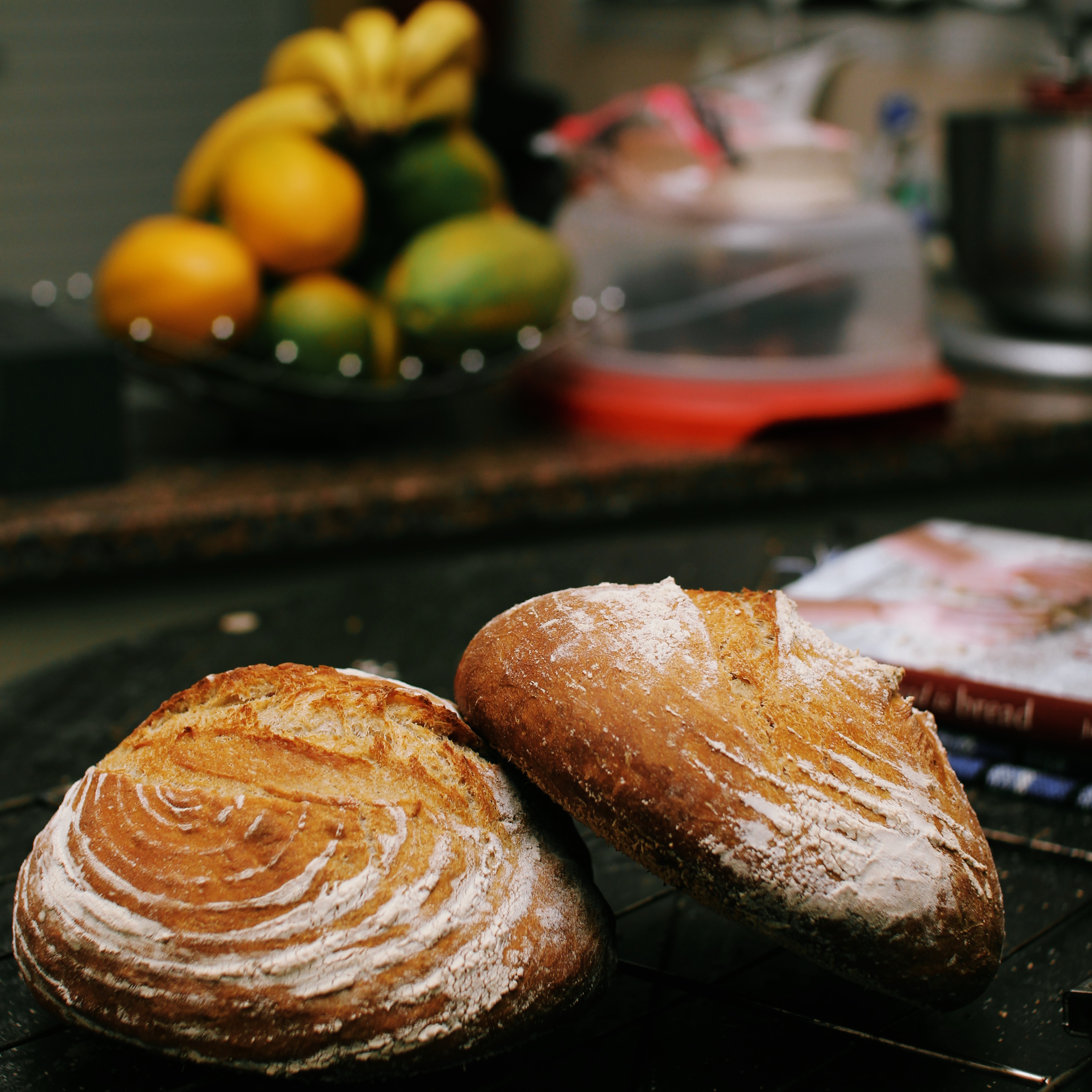






 Tijolo, pedra, cimento e areia. Destruir e reconstruir.
Tijolo, pedra, cimento e areia. Destruir e reconstruir.